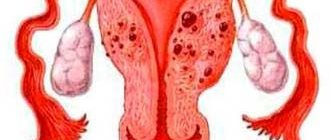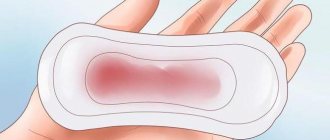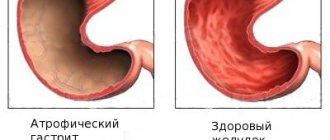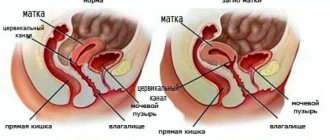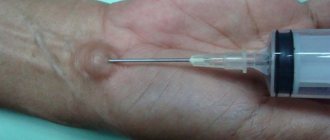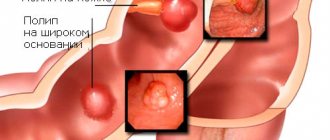Characteristics and causes of pathology
Hydrosalpinx or dropsy of the fallopian tubes is a disease of the female reproductive system.
Normally, the mucous membrane of the fallopian tubes produces a special fluid - transudate, which is necessary for their functioning. But due to some reasons, adhesions (scars) appear in the tubes, which interfere with the natural passage of transudate and lead to its accumulation. This provokes the proliferation of bacteria and the development of suppuration. This phenomenon can be observed both in the left or right pipe, or in both at the same time.
The main reason for the accumulation of fluid in the fallopian tubes is the inflammatory process, which can be provoked by the following factors:
- Previously transmitted infectious diseases, sexually transmitted diseases. First of all, it is gonorrhea and chlamydia
- Inflammatory process in the tissues of the fallopian tubes - salpingitis
- Inflammation of the appendages
- The presence of malignant formations (tumors) and metastases in the pelvic organs
- Surgical operations on the female genital organs, which resulted in complications in the form of inflammation of the fallopian tubes
All these pathologies, if not detected and treated in time, provoke inflammation. It leads to a number of complications, including obstruction of the fallopian tubes and abnormal accumulation of transudate in them.
Determination of fluid in the uterus using ultrasound
Ultrasound diagnostics of the pelvic organs cannot accurately determine the volume of fluid in them, since this value is not constant. But, according to some parameters, this volume is approximately determined. Visually, fluid in the organ on ultrasound appears in the form of anechoic areas, which are displayed on the monitor screen in the form of gray or black stripes.
To determine the volume of exudative secretion, a specialist measures its height. Based on the following parameters, a conclusion is made about the activity of the process:
- liquid height less than 10 mm – activity is insignificant;
- from 10 to 50 mm – the fluid content in the organ is moderate;
- over 50 mm – the level of effusion is significant, which indicates the activity and progression of the pathological process, and this requires urgent consultation with a doctor to determine its cause and treatment tactics.
If a small amount of fluid detected on an ultrasound was performed during the middle of the menstrual cycle, such a deviation from the norm is not a pathology and cannot be treated.
But if the patient has complaints and symptoms of a pathological process, then in this case, an additional examination is prescribed. Detection of the level of exudate in the organ on other days of the cycle, in the absence of complaints, requires consultation with a specialist and a dynamic ultrasound.
The hollow smooth muscle organ is located in the center of the woman's pelvis. Sometimes fluid of various origins accumulates in the uterine cavity. This phenomenon is typical for women who have undergone gynecological surgery, miscarriage, or medical abortion. Fluid in the uterus forms in patients of different age groups. Most often, this condition occurs in women of reproductive age.
Diagnosis and treatment methods
It is very important for effective treatment to identify the disease in time so as not to start it and prevent complications from occurring.
There are several forms of diagnosing fluid accumulation in the fallopian tubes.
A gynecological examination cannot accurately diagnose the disease. But an experienced doctor, upon examination, will determine its possible cause and also rule out the presence of a tumor.
Ultrasound, x-rays, and taking fluid from the fallopian tubes for examination are also used for diagnosis.
Depending on the cause of the pathology, as well as the severity of its course, treatment is prescribed in two forms:
- Medication. It consists of influencing the cause of transudate accumulation with the help of medications. For this purpose, antibiotics are used to relieve inflammation in the fallopian tubes. Additionally, physical therapy may be prescribed.
- Surgical. This method is used in most cases as the most effective. Surgery occurs through laparoscopy (a more gentle method of surgery). It involves removing scars and restoring the patency of the fallopian tubes.
Treatment must be carried out under strict medical supervision
Surgery and medication do not always produce positive results.
Main symptoms of the disease
Hydrosalpinx is an accumulation of fluid in the fallopian tubes.
The disease may not manifest itself immediately. Very often, patients do not even suspect the presence of pathology, since there are no symptoms.
Hydrosalpinx occurs in two forms - chronic and acute.
The chronic form is characterized by rather sluggish symptoms. A woman may feel absolutely normal. As a rule, such pathology is discovered by chance (for example, during ultrasound).
The acute form manifests itself much more clearly, since it is often accompanied by purulent formations.
Frequent symptoms are:
- high body temperature (up to 39 degrees Celsius)
- general weakness of the body
- throbbing or bursting pain in the lower abdomen
- periodic appearance of watery vaginal discharge
- increased heart rate
- the appearance of a distinct blush on the face
You should also be wary if you have problems conceiving a child that last more than 2 years. This symptom is characteristic of a sluggish form of fallopian tube disease, since their obstruction does not allow a woman to become pregnant.
Despite the seriousness of the disease, fluid in the pipes rarely manifests itself in a woman’s life. In many cases, hydrosalpinx is asymptomatic and is discovered when planning a pregnancy or during a routine examination by a gynecologist.
Sometimes, symptoms can be vague, which may indicate other different health problems.
So, it’s worth getting examined if a woman notices the following:
- Stretching moderate pain in the lower abdomen. The pain itself may be pulsating.
- Pain can cause tachycardia in the sick person.
- Feelings of heaviness or fullness in the same area.
- From time to time, a woman may notice uncharacteristic vaginal discharge. They can be serous or purulent.
- Rarely, the fallopian tube ruptures.
- If there is a large accumulation of fluid in the fallopian tubes, the body temperature may increase (in case of suppuration, the temperature rises to 40 degrees).
- If a couple has been trying to conceive a child for two years without success, this is a good reason to undergo a full examination of both partners. The woman, in turn, will have to clear her pipes.
Like many gynecological diseases, hydrosalpinx can be asymptomatic. Please note the following:
- Inability to get pregnant within 2 years;
- Pulling or bursting pain in the lower abdomen;
- Sometimes a clear or serous fluid that oozes intermittently from the vagina;
- Increased body temperature, general weakness, interruptions in heart rhythm;
- In advanced cases, the fallopian tube may rupture.
Prevention and possible complications
The main methods of preventing pathology (excess fluid in the fallopian tubes) are:
- regular visits to the gynecologist
- timely treatment of infectious diseases
- protected sex (prevention of gonorrhea and other sexually transmitted diseases)
Following these simple rules will help a woman preserve her health, as well as fulfill her main purpose - to become a mother. Prevention is the best treatment for hydrosalpinx.
Dropsy of the fallopian tubes requires mandatory treatment, since advanced disease can lead to many complications. First of all, this is:
- ruptured fallopian tubes
- the occurrence of chronic infection in the pelvic organs
- stretching of the walls of the fallopian tubes, which leads to loss of their elasticity
- suppuration of excess fluid and development of bacteria
Complications provoke a number of problems associated with the reproductive function of the female body. Among them are the occurrence of difficulties in conceiving and bearing a child, complete infertility, and ectopic pregnancy.
Therefore, it is so important to identify and treat pathology in a timely manner. After all, hydrosalpinx is not a death sentence. After it, many women manage to experience the joy of motherhood. The main thing is not to let the disease progress and not to self-medicate.
Types of fluid in the uterus
The main types of fluid in the uterus are:
- serozometra - formed against the background of tobacco and alcohol addiction, as a result of medical abortion, cesarean section, physical inactivity, rough sexual contact;
- lochiometra - occurs after childbirth, when the outflow of lochia is disrupted due to the closure of the lumen of the uterine cervix;
- pyometra - abortions and diagnostic curettages can provoke the accumulation of purulent exudate, problems with the tone of the muscle walls of the organ.
The formation of hematometra is associated with the postoperative period.
Treatment of hydrosalpinx
Treatment of fluid stagnation in the fallopian tubes is carried out using both conservative and surgical methods.
- Conservative treatment . Fluid in the fallopian tube is a consequence; first you need to determine the cause of the disease. A course of antibiotics and physiotherapy is prescribed. If the cause is adnexitis or salpingitis, then drug treatment can overcome the disease. If a woman does not yet have children, then they also try to do without surgery. Treatment is carried out under the constant supervision of a doctor in a hospital setting. If the dynamics are poor, surgery is necessary.
- Surgery . Broadband operations in gynecological practice are a thing of the past. The operation is performed using laparoscopy. During the operation, the surgeon attempts to preserve the fallopian tube, remove adhesions and restore patency. If this is not possible, then the affected part is removed, as it becomes a source of infection.
Although the treatment is quite effective, even if the integrity of the tube is preserved, the epithelium is no longer restored and the risk of ectopic pregnancy remains. Women who have undergone surgery are recommended to undergo IVF.
Gynecology is a very delicate system of the female body. It’s easy to disrupt the normal functioning of the reproductive system, but you’ll have to repent for the rest of your life. Start treatment for any gynecological disease on time, and you will see how your baby grows!
Important! Serous fluid in the uterine tube can be follicular or normal. It happens that cavities of a closed type appear there, which first stretch the pipe and then affect the thinning of its walls.
Please note that before starting treatment, it is necessary for the doctor to accurately diagnose and identify the cause of the serosometer. Usually, the puncture is taken using laparoscopy. Ultrasounds are required. They help to identify the volume of fluid accumulation and the rate of its formation.
Very often, the accumulation of serous fluid in the uterus or tube indicates the presence of malignant neoplasms in a woman. But even if this is not the case, the treatment of such pathology is primarily surgical. The essence of the operation is to remove scar tissue.
If pregnancy is not planned in the future, the doctor completely removes the fallopian tube. In the case when a woman wants to have more children, special equipment for surgical intervention is used - endovideosurgical equipment. Then reproduction is preserved.
The accumulation of serous fluid in the uterine cavity or its tube can be treated with physical therapy. It is used mainly in the initial stages of the disease and in small amounts of accumulated fluid. There are several directions: electromagnetophoresis, laser phoresis, magnetophoresis.
Remember that vitamin therapy and homeopathic remedies (treatment of like with like) will help a woman get rid of serosometer.
Interesting! When serous fluid appears in the uterus, you can resort to traditional medicine methods. Here the main emphasis is on raising and strengthening a woman’s immunity. Herbs and fresh vegetable and fruit juices help well.
A drink made from celery and beets has a healing effect, and a fruit drink made from sea buckthorn berries also helps well. Decoctions of chamomile and boron uterus are considered an effective remedy for the appearance of fluid. sage and calendula.
Pay attention to baths based on mustard powder. The procedure takes no more than 20 minutes, and the course of treatment lasts for two weeks. Contraindications during and before menstruation, as well as after operations.
It is easier to prevent any pathology than to cure it later. This means that a woman needs to monitor her health very carefully. To prevent serous disease, you should use suppositories or vaginal tampons, which contain honey.
Pay attention to physical exercise. It's good if they are regular. It is important in the process of getting rid of the serozometer to give up bad habits - you should forget about smoking and alcohol abuse.
Of course, quite often the risk of serous fluid accumulation in the uterus remains high. Therefore, at the slightest symptoms, you should immediately consult a doctor and undergo an ultrasound examination, take tests and begin treatment if the diagnosis is confirmed.
Don't let everything go. Advanced cases of serosometry are very difficult to treat. It happens that due to the formed serous fluid, the pipes burst, and this leads to peritonitis, which develops very quickly and can lead to the death of the woman. Take care of yourself and be healthy!
Articles on the topic
In gynecology, there are two ways to treat hydrosalpinx:
- Surgically;
- And conservative treatment.
To begin with, they always try to use a conservative method of treatment, especially if the woman has not yet given birth. Antibiotics and physiotherapy are used as “weapons”. Throughout the treatment, the patient is under constant supervision by a doctor, and the dynamics of the situation are monitored during the course of treatment. If the situation remains virtually unchanged, surgical intervention is required.
The surgical treatment method involves surgery using a laparoscope. In the process, the gynecologist tries to remove adhesions so that the patency of the uterine canal is restored. In situations where treatment of adhesions is pointless and nothing else can be done, the fallopian tube is removed.
In addition, after laparoscopy, the tissue base of the fallopian tubes has a damaged surface, which increases the risk of ectopic pregnancy. Therefore, women who become pregnant after this surgical treatment are examined by ultrasound to confirm the normal development of pregnancy.
Dear women, health comes first. A timely scheduled examination by a doctor significantly increases the chance of detecting a problem at a very early stage and avoiding consequences in the future.
- Conservative treatment. Fluid in the fallopian tube is a consequence; first you need to determine the cause of the disease. A course of antibiotics and physiotherapy is prescribed. If the cause is adnexitis or salpingitis, then drug treatment can overcome the disease. If a woman does not yet have children, then they also try to do without surgery. Treatment is carried out under the constant supervision of a doctor in a hospital setting. If the dynamics are poor, surgery is necessary.
- Surgery. Broadband operations in gynecological practice are a thing of the past. The operation is performed using laparoscopy. During the operation, the surgeon attempts to preserve the fallopian tube, remove adhesions and restore patency. If this is not possible, then the affected part is removed, as it becomes a source of infection.
Treatment will depend on the level of activity of the process. In order to stop (completely stop) the infectious process, a combination of herbal medicine, homeopathic remedies, and vitamin therapy is used in combination with modern physiotherapy techniques.
Various physiotherapeutic procedures (laser phoresis, magnetophoresis, electromagnetophoresis) make it possible to introduce a medicinal substance directly into the site of inflammation, while bypassing the liver, gastrointestinal tract and kidneys.
DETAILS: What is an atrophic type of smear in gynecology
This makes it possible to avoid negative effects on healthy tissues and organs, reduce the dosage of medicinal substances, and also shorten the overall treatment period (that is, increase the medical and economic feasibility).
It should also be noted that treating the fallopian tubes with folk remedies is a waste of time, since it does not show positive results.
In a number of situations, in the presence of long-existing hydrosalpinx, after preliminary physiotherapeutic preparation, laparoscopic treatment with reocclusion (restoration of patency) of the fallopian tube, as well as control hysterosalpingography, is indicated.
In this case, competently performed pre- and postoperative physiotherapeutic manipulations can significantly increase the chance of successful regeneration (restoration) of the operated fallopian tube.
It is possible to treat hydrosalpinx with folk remedies, but their effectiveness has not been confirmed by official medicine. Any independent actions should be carried out after consulting with your doctor.
Among the most popular folk recipes that are suitable for parallel treatment with the recommended one: the use of a decoction of Adam's root and an infusion of one-sided ramishia. It is worth noting that in the absence of surgical treatment, these methods are rarely relevant, and it is difficult to predict the degree of their impact. Only a gynecologist can make assumptions.
Today, treatment of hydrosalpinx involves medication (therapeutic) and surgical intervention. Effective treatment of the disease can only be considered in a medical hospital.
Initial treatment should be aimed at eliminating pain and relieving inflammation in the uterine area. The use of antibacterial drugs and physiotherapeutic procedures will help eliminate the inflammatory processes that have arisen.
The administration of injectable antibiotic drugs destroys the infectious focus in the area of the adhesion. As a rule, the applied therapeutic treatment with pharmacological drugs is quite effective at an early stage of the disease.
However, treatment of such a gynecological disease is not always limited to general therapy. In some cases, surgical treatment has to be used. Surgical intervention is aimed at removing adhesions in the uterine cavity and expanding the lumen in the fallopian tube.
